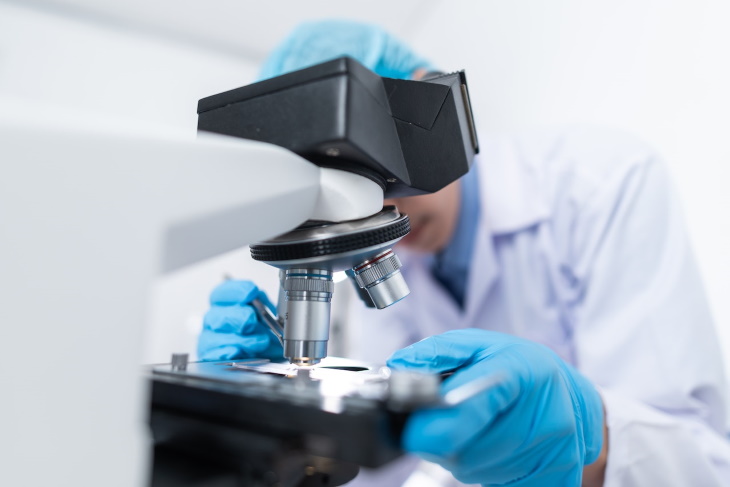Parkinson’s disease (PD) is one of the most pervasive and widespread neurological disorders in the world. This chronic disease affects a person’s movement and cognition, and it has no known cure. Existing Parkinson’s medications and other treatments are more effective at the early stages of the disease, so a reliable and quick diagnostic tool remains a key priority in Parkinson’s research.
Scientists from the United Kingdom took an unusual route to diagnose Parkinson’s. They developed a noninvasive skin test that only takes 3 minutes to process and can accurately identify the disease, even in its early stages.
Why Diagnosing Parkinson’s Disease is Challenging

Around sixty thousand Americans are diagnosed with PD annually, and many more fly under the radar. Younger people are most likely to be misdiagnosed or underdiagnosed, even though 10-20% of all PD patients experience the first symptoms before 50 years of age.
At present, diagnosing a person with Parkinson’s is a lengthy and complicated process. A specialist examines brain images, tests symptoms with neurological tests like a tapping or walking test, and looks at a patient’s medical history before making a final diagnosis.
Since PD has many mutual symptoms with other neurological issues, it often takes several visits to establish a Parkinson’s diagnosis. This, of course, takes a lot of time from the patient and the doctor. And for a disease that affects nearly a million Americans, this seems to be a pretty inefficient diagnostic approach.
Researchers from the University of Manchester, in the UK, say that they can change that once and for all. They developed a quick test that is able to detect PD based on a person’s skin secretions. The results of the study were published in the Journal of the American Chemical Society.
Scientists Develop a 3-Minute Test for Parkinson’s

First observed in 1927, increased production of sebum (an oily substance in the skin) is a known symptom of Parkinson’s disease. But the research in question was inspired by the first-person account of one Joy Milne. A retired nurse with hereditary hyperosmia, or the heightened sense of smell, Milne observed that her husband Les’ scent had suddenly changed.
More than a decade later, Les was diagnosed with PD. The couple started going to a Parkinson’s support group, and right away, Milne noticed that the people in the group had the same body smell as her husband Les.
Sadly, Les passed away in 2015, but Milne decided to collaborate with medical researchers to use her observation as a way to improve the diagnosis of the disease. Biofluid analyses supported her estimation, as these have revealed that the composition of sebum indeed changes with the onset of the disease. But the research didn’t stop there.
Researchers from the University of Manchester found out that a simple sebum sample taken from the skin with a cotton swab can help them detect unique biomarkers associated with Parkinson’s disease. This is the first chemical test of PD, and the researchers are planning to collaborate with hospitals in the Manchester area to implement the test in the next two years.
Related article: These Are the Early Signs of Parkinson's Disease
How Does the Test Work?

The researchers report that they recruited participants from 27 clinics in the UK. All in all, they collected 150 sebum samples taken by simply swiping the cotton swab over the skin in the mid-back area. 79 samples were taken from PD patients, and 71 were taken from individuals without the disease and used as controls.
The samples were transported to a lab, where the sebum was isolated onto filter paper. The lab specialists then added a solvent and voltage to prepare it to be used in a mass spectrometer, which is a device used to identify unknown chemical compounds. Overall, the samples contained 4,200 unique features, 500 of which were uniquely found in individuals with PD but not in the control group.
The unique chemical markers can now be used to test new samples in PD diagnoses and to further confirm the test’s reliability. As neurologist Prof. Monty Silverdale, the clinical lead author of the study, pointed out, “This test has the potential to massively improve the diagnosis and management of people with Parkinson’s disease.”

Like any study, the research presented here has some limitations. We are yet to find out if this rapid and affordable test is sensitive enough to diagnose all PD patients, especially those in the early stages of the disease. Another open question is if this test can be used in people who produce less sebum. For example, conditions like seborrhea or seborrheic dermatitis lower one’s sebum production, and it is commonly found in people with PD.
We eagerly await the UK researchers to address these questions in their further research.
 Go to BabaMail
Go to BabaMail




























